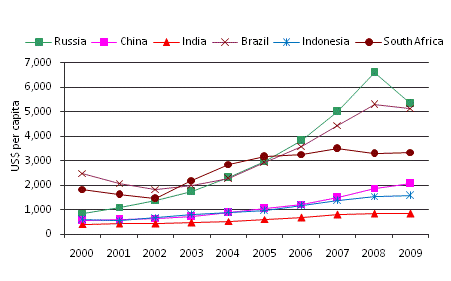The S&P/TSX Capped Energy Index consists of Canadian energy sector stocks that are listed on the TSX. The iShares S&P/TSX Capped Energy ETF (XEG.TO) tracks the performance of this index. The top 10 components of this fund are listed below together with their ticker in the US markets and the current dividend yield:
1 .Suncor Energy Inc (SU)
Current Dividend Yield: 1.26%
2. Canadian National Resources (CNQ)
Current Dividend Yield: 0.92%
3. Encana Corp (ECA)
Current Dividend Yield: 3.01%
4. Cenovus Energy Inc (CVE)
Current Dividend Yield: 3.04%
5. Talisman Energy Inc (TLM)
Current Dividend Yield: 1.50%
6. Canadian Oil Sands Trust (OTC: COSWF)
Current Dividend Yield: 8.16%
7. Nexen Inc (NXY)
Current Dividend Yield: 1.07%
8. Imperial Oil (IMO)
Current Dividend Yield: 1.15%
9. Penn West Energy Trust (PWE)
Current Dividend Yield: 8.85%
10. Crescent Point Energy Corp
Current Dividend Yield: N/A
